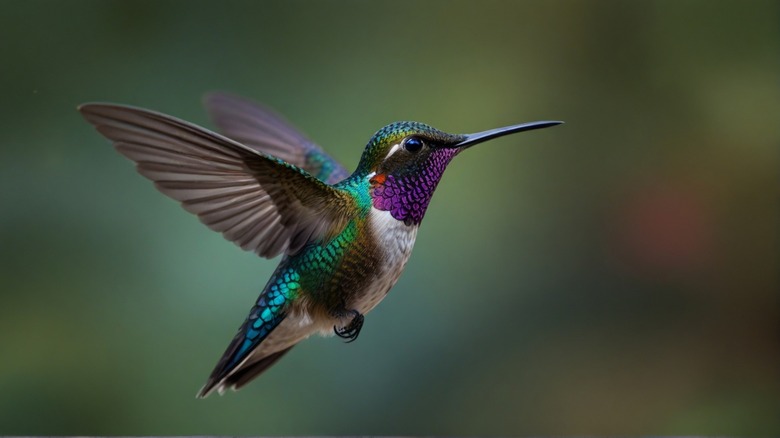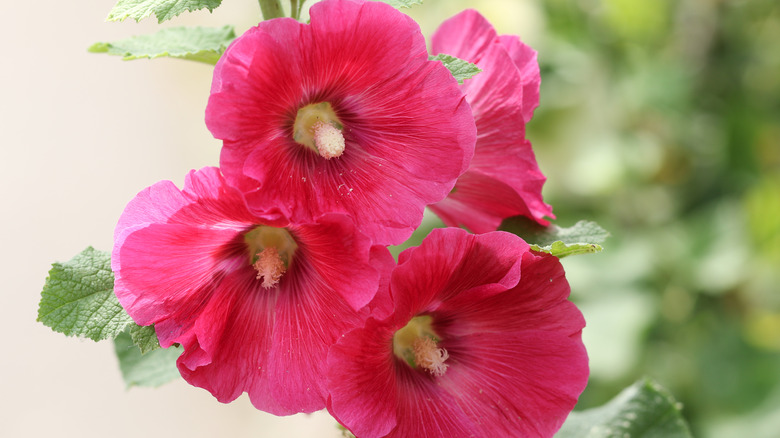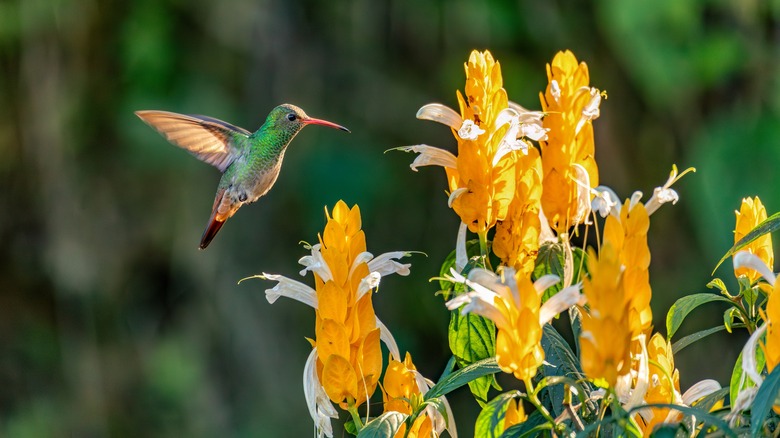Hummingbirds Adore This Sun-Loving Plant (But Be Careful Where You Grow It)
Creating a hummingbird-friendly garden full of nectar-rich flowers is a key step to attracting these small (and always hungry) birds. One type of plant that is known to benefit hummingbirds is hollyhock (Alcea rosea), a perennial known for producing multiple bright-colored flowers. This plant is also relatively easy to grow, and it thrives in locations with full sun. Despite their benefits, however, hollyhock is considered an invasive species in some regions, so you'll need to take this into account before you grow it in your own yard or garden.
Hollyhocks are found across the U.S., but these plants are actually native to Asia. They also reseed easily and lead to excessive growth in areas that consider them invasive. Hollyhock plants tend to grow easily in climates that are warm and arid, with plentiful sunlight needed for them to thrive. If you plant hollyhock, it's important to know that it can reseed and potentially grow in unwanted areas of your garden. To prevent this from becoming a problem, you can consider harvesting some of their seeds by pruning away old growth before the flowers fall off and get distributed by the wind.
How to grow and care for hollyhock
If you plant hollyhock in your garden, know that any hummingbirds may consider the nectar-rich flowers of this plant as one part of their diets. Not only are red-colored flowers the most common for hollyhock, but hummingbirds are also particularly attracted to red hues. In fact, a healthy hollyhock plant can provide sustenance for hummingbirds as well as other pollinators in your area, such as butterflies and bees.
Before you start making space in your garden, there are important facts to know before planting hollyhock. First, hollyhock prefers sunny spots, as it needs at least six hours of full sun per day. It also does well in most USDA plant hardiness zones 2 through 10, though it requires moist, well-draining soil. While hollyhock seeds are available, it's best to start with small plants and to place these in soil at least a foot apart from one another to help give them room to reseed.
Once it starts growing, hollyhock can reach up to 8 feet in height, with flowers blooming throughout the summer months. However, it's also important to be on the lookout for rust-colored spots that may indicate fungal disease. Also called "hollyhock rust," this is the most common problem seen in these plants, and you will need to remove affected leaves to help manage spreading.
Alternatives to growing hollyhock to help attract hummingbirds
Hollyhock isn't the only option to attract hummingbirds to your garden, as it is considered invasive in certain areas of California, for instance. In fact, there are several alternatives to consider, including bee balm (Monarda didyma), columbine (Aquilegia canadensis), petunia (Petunia x hybrida) phlox (Phlox paniculata), and zinnia (Zinnia elegans) plants. Also, the brighter the flowers, the better. If, however, you still have your heart set on the appearance and height of hollyhock, but are concerned about its invasive nature, you might consider other flowering plants that look similar. One possibility is hibiscus (Hibiscus species).
Also know there are several other ways you can attract hummingbirds to your yard, including with homemade nectar-containing feeders and sources of water. Reducing the use of pesticides in your yard can also make the space more hummingbird-friendly because these birds also rely on insects to help round out their diets. Variety is key here, as hummingbirds are likely feed from a variety of flowers.


